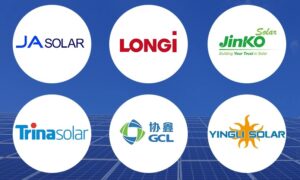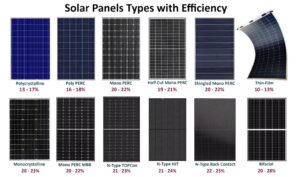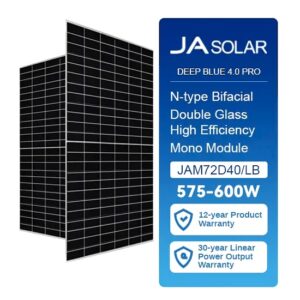Harnessing the Power of the Sun: The Evolution of Solar Panel Technology

Solar power has undergone a remarkable transformation since its inception, evolving from rudimentary experiments to a leading source of renewable energy. This journey is marked by significant technological advancements that have enhanced efficiency and accessibility.
Historical Progression of Solar Panel Efficiency
The concept of harnessing solar energy dates back to the 19th century. In 1839, French physicist Alexandre Edmond Becquerel discovered the photovoltaic effect, though early solar cells exhibited efficiencies below 1%. A pivotal moment occurred in 1954 when Bell Labs developed the first practical silicon solar cell, achieving nearly 6% efficiency. This breakthrough demonstrated the potential of solar energy for practical applications — Solar Power Guide
Over the subsequent decades, continuous research and development led to gradual improvements in efficiency. By the early 2000s, commercial solar panels reached efficiencies around 15%. Today, state-of-the-art panels manufactured by companies such as JA Solar boast efficiencies exceeding 22%, with laboratory settings achieving even higher rates. For instance, Trina Solar recently set a world record with a 25.44% efficiency using n-type fully passivated hetero-junction (HJT) technology — Reuters

Advancements in Solar Panel Technology
Several key technological innovations have driven the enhancement of solar panel efficiency:
Monocrystalline Silicon Cells:
- Known for their high efficiency and durability, these cells are crafted from a single crystal structure, facilitating better electron flow.
Polycrystalline Silicon Cells:
- Composed of multiple crystal structures, these cells are less expensive but traditionally offer lower efficiency compared to monocrystalline counterparts.
Thin-Film Solar Cells:
- Utilizing materials like cadmium telluride or amorphous silicon, thin-film cells are lightweight and flexible, suitable for diverse applications, though generally less efficient than crystalline silicon cells — Wikipedia
N-Type Cells:
- Representing a significant advancement, n-type cells incorporate an excess of electrons, reducing charge carrier recombination and enhancing efficiency. Variations include:
- Heterojunction (HJT): Combines crystalline silicon wafers with thin amorphous silicon layers, offering exceptional performance under low-light conditions and favorable temperature coefficients.
- TOPCon (Tunnel Oxide Passivated Contact): Features a thin tunneling oxide layer on the cell’s rear side, minimizing recombination and improving light absorption.
- Interdigitated Back Contact (IBC): Positions all electrical contacts on the rear side, reducing shading losses and achieving the highest efficiencies among silicon-based cells.
The Evolution of Solar Panel Efficiency: N-Type Cell Technology
In the pursuit of sustainable energy solutions, solar panels have emerged as a cornerstone technology. Among the various types available, silicon-based mono-crystalline panels reign supreme with their exceptional efficiency. However, within this category, a remarkable evolution has unfolded, ushering in the era of N-type cell technology.
N-Type Cells: A Paradigm Shift
N-type cells represent a significant advancement over traditional P-type cells. By introducing n-type silicon, which contains an excess of electrons, the charge carrier recombination rate is reduced, resulting in higher efficiency. This breakthrough has paved the way for panels that surpass the 24% efficiency mark, a feat previously unattainable with P-type cells
Variations of N-Type Cells
The world of N-type cells encompasses three primary variations, each with its unique characteristics:
- Heterojunction (HJT): Combining crystalline silicon wafers with thin layers of amorphous silicon, HJT cells offer exceptional performance under low-light conditions and exhibit excellent temperature coefficients.
- TOPcon: Employing a thin layer of tunneling oxide passivated contact (TOPcon) on the cell’s rear side, TOPcon cells minimize recombination and enhance light absorption, leading to higher efficiency.
- Back-Contact (IBC): Representing the pinnacle of N-type cell technology, IBC cells feature contacts on the panel’s rear side, allowing for increased light absorption and reduced shading losses. This configuration results in the highest efficiency among all solar cell types.
Obsolescence of Polycrystalline Cells
Polycrystalline cells, characterized by their lower efficiency, have gradually fallen out of favor. Their efficiency ceiling, hovering around 18%, pales in comparison to the superior performance of N-type cells. Consequently, leading solar panel manufacturers worldwide have embraced the transition to N-type technology.
Important Note:

N-Type solar panel technology is currently the industry standard due to its superior efficiency, longevity, and performance under various conditions. However, some suppliers may stock outdated P-Type solar panels and attempt to sell them at prices comparable to N-Type modules. These panels, while cheaper to produce, offer significantly lower efficiency and performance. To ensure you’re getting the best value for your investment, always ask your supplier about the specific technology used in the solar panels they offer. Request and carefully review the datasheet for the module to confirm whether it is N-Type or P-Type. Staying informed can help you avoid being misled and ensure you select high-quality, cutting-edge solar panels for your installation.
Factors Influencing Panel Efficiency
Beyond cell type, several other factors contribute to solar panel efficiency, including:
Panel Design: The arrangement and interconnection of cells within a panel can influence the overall efficiency. Cell Configuration: The size, shape, and number of cells used in a panel can impact its power output.
Other Factors: Factors such as temperature, shading, and spectral response also play a role in determining panel efficiency.
Conclusion
N-type cell technology has revolutionized the solar panel industry, pushing the boundaries of efficiency beyond previous limits. With HJT, TOPcon, and IBC cells leading the charge, the quest for even higher efficiency continues unabated. As we embrace a sustainable energy future, the unparalleled efficiency of these N-type solar panels will serve as a cornerstone for the generation of clean, renewable energy.
Current Recommendations for Solar Installations
For individuals considering solar installations, the choice of panel technology should balance efficiency, cost, and specific application needs. As of 2025, the following options are noteworthy:
- Monocrystalline Panels: Offering efficiencies between 20% to 22%, these panels are widely available and suitable for residential installations where space is limited — Renogy
- N-Type Panels (HJT, TOPCon, IBC): While currently at a premium price point, these panels provide superior efficiency and longevity, making them ideal for installations where maximizing energy output is crucial.
Future Outlook
The solar industry continues to innovate, with emerging technologies poised to further enhance efficiency and reduce costs:
- Perovskite Solar Cells: These cells have demonstrated high efficiency in laboratory settings and offer the potential for low-cost production, though stability and scalability challenges remain.
- Quantum Dot Solar Cells: Utilizing nanoscale semiconductor particles, these cells aim to achieve higher efficiencies by capturing a broader spectrum of sunlight.
Conclusion
The evolution of solar panel technology reflects a relentless pursuit of efficiency and sustainability. With advancements like n-type cell technology setting new benchmarks, solar energy is more viable and accessible than ever. For prospective adopters, investing in high-efficiency panels can offer long-term benefits, while staying informed about emerging technologies will ensure readiness for future innovations in renewable energy.

